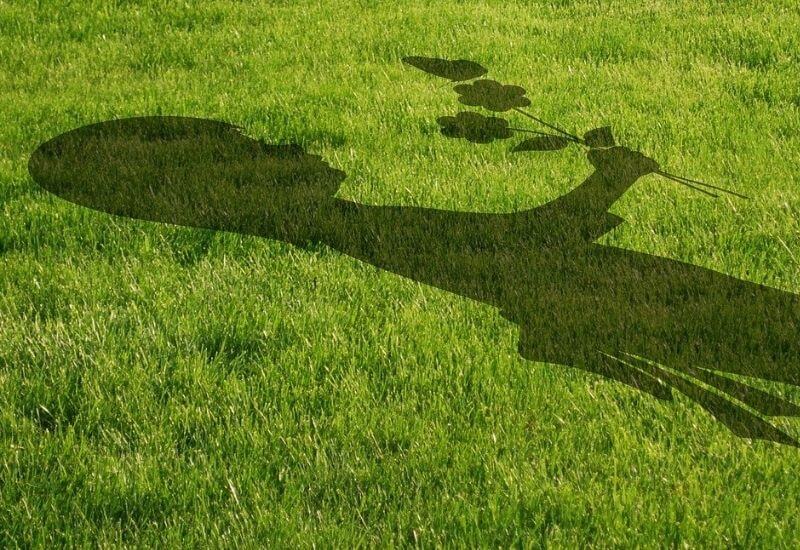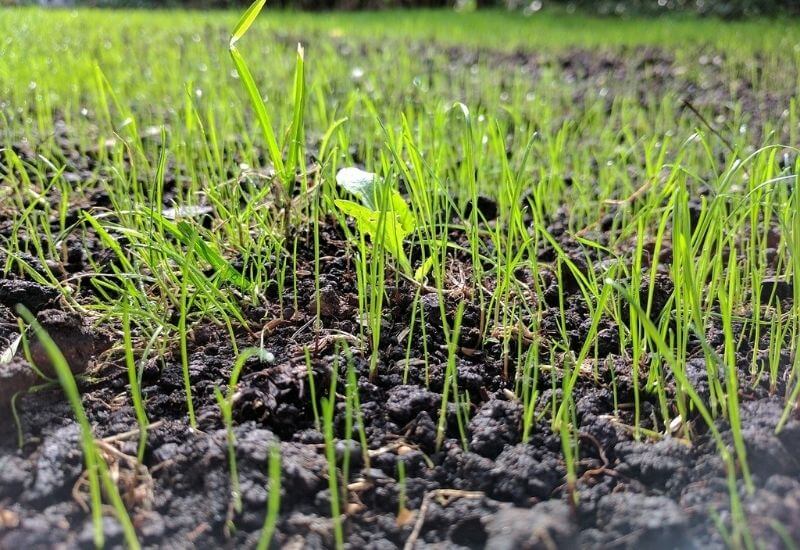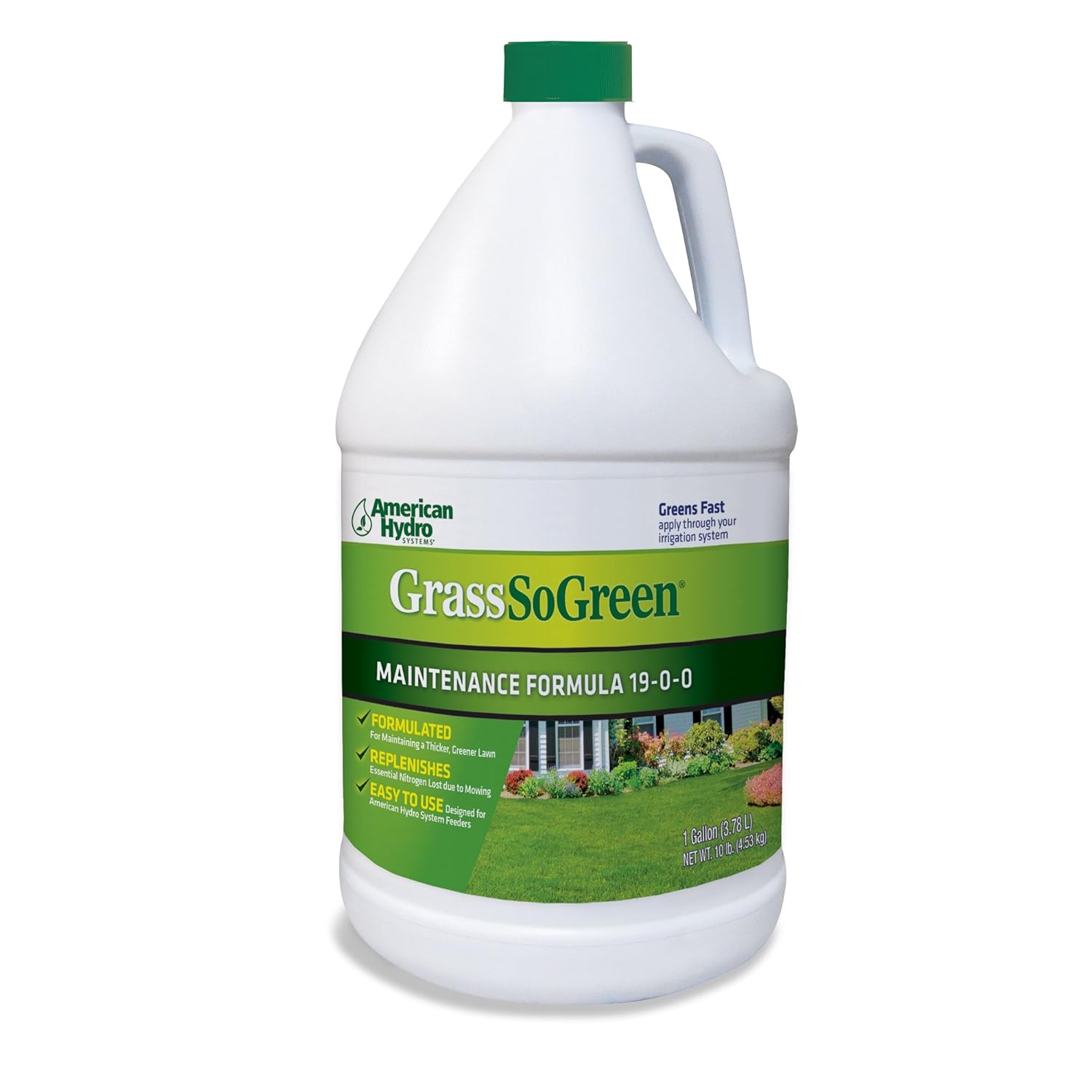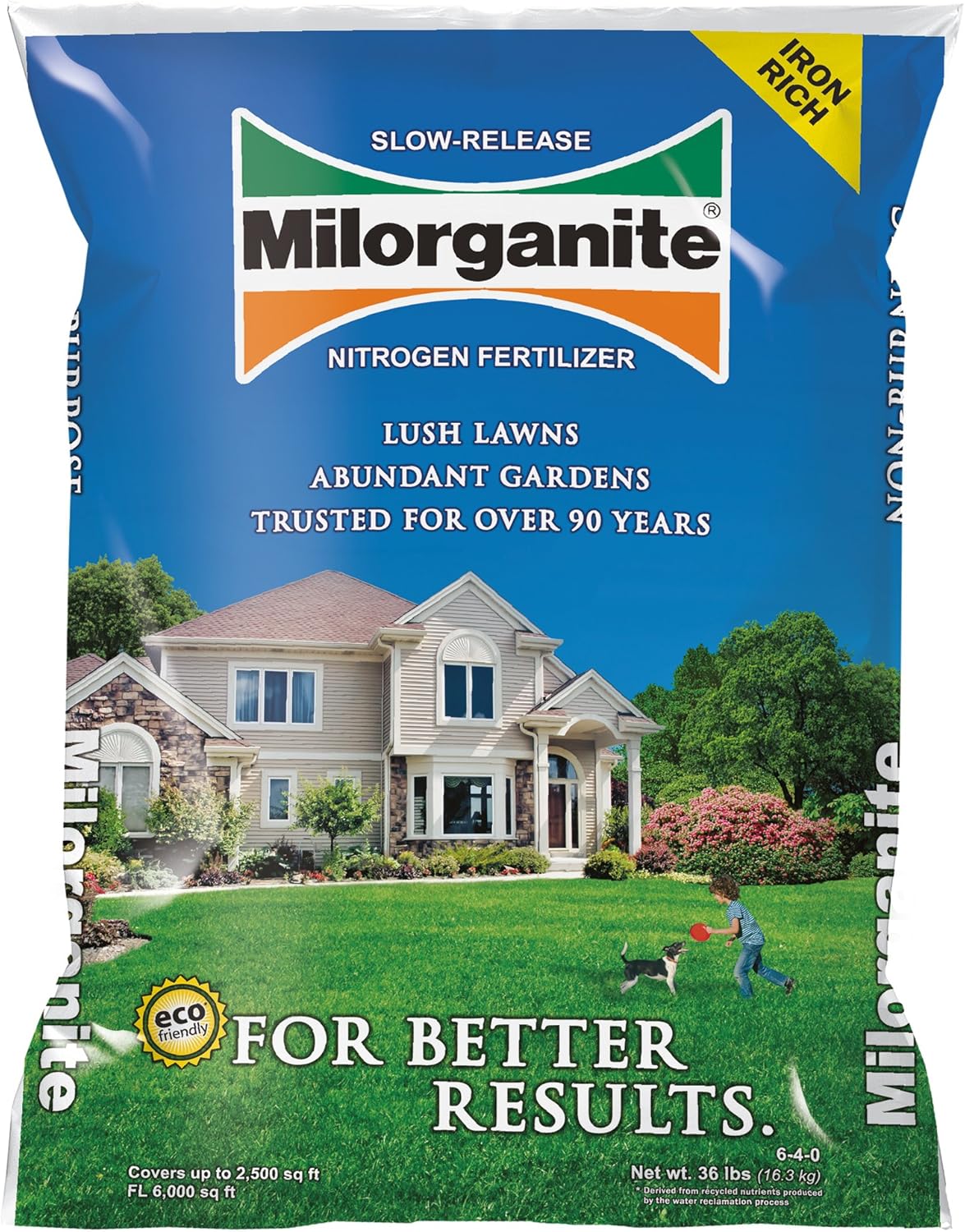Any experienced gardener knows that lush, green lawns don’t just happen overnight. Maintaining your lawn takes work, just like maintaining the rest of your garden. This generally involves more than just weeding and mowing the lawn – most lawns need a bit of extra help in the form of fertilizer.
This is something a lot of people overlook. They wrongly assume that their grass will flourish on its own, without any outside help beyond the occasional spritz of water.
Of course, this is wrong. The type of fertilizer you use and the frequency of your use can make or break a good lawn.
When it comes to fertilizers, you shouldn’t take a “one size fits all” approach. Buying a good fertilizer involves more than just finding the cheapest bag online, applying once or twice, and hoping for the best.
You’re putting important nutrients onto your lawn, and for the best results, you need to be sure that you’re putting the right kind of nutrients and the right amount into your soil.
We’ll spend some time discussing why you should be using fertilizer and what kinds of fertilizer are available, then we’ll look at my top ten recommendations for the best fertilizers for your lawn.
Table of Contents
Why Should You Be Using Lawn Fertilizer?
The key to healthy soil (and therefore a healthy lawn) lies in its nutrients. Or, more specifically, three main nutrients: phosphorous, potassium, and nitrogen. You might be surprised to learn that most soil often doesn’t contain enough of one or all of these nutrients. For optimal results, you’ll need to make up that deficiency somehow.
This means that for long-term, healthy soil, you should be using some kind of fertilizer on your lawn. This ensures that whatever you’re growing in your soil, be it a lawn of well-tended grass, vegetable garden, or a nice bed of flowers, and you’ll get the very best out of your garden.
What Do Fertilizers Contain?
The market for soil fertilizers is very large, so of course, there’s a wide variety of products available. This can be a little confusing, and it’s important to know what you’re looking for in a fertilizer, as well as the main differences and ingredients you should be looking out for.
It’s also worth remembering that the kinds of fertilizer for growing food tends to be different from fertilizer for non-edible plants and lawns. Be sure to get the right fertilizer for your needs.
Nutrient Content
There are many different types of fertilizer, and not every type will be suitable for your lawn. Depending on where you live, the soil’s nutrient composition may vary. The kind of fertilizer you used when you lived somewhere else, with a different garden, may well be unsuitable for your current garden.
The first thing you should look at is the nutrient content or NPK Ratio. This basically means the ratio of the three big nutrients: Nitrogen-Phosphorous-Potassium (K). This shows the percentage of each nutrient contained in the fertilizer.
While there are other nutrients and minerals in fertilizer, these are by far the most dominant ones and are the most important in healthy soil.
If your soil is already high in Nitrogen, for example, you’ll need a fertilizer with a lower Nitrogen ratio. However, this will depend on what kind of soil you already have. If you’re not sure, it’s worth getting your soil tested. The point of the fertilizer is to replace the nutrients that aren’t available in the soil in sufficient quantities.
While results may vary, you can expect some other nutrients appearing in your fertilizer, albeit in smaller amounts:
- Magnesium
- Calcium
- Sulfur
- Zinc
- Copper
- Chlorine
- Iron
You can always check the label for these ingredients.
Organic vs. Inorganic
Organic fertilizers are, as you’d imagine, all-natural. They contain things like manure, blood and bone meal, seaweed extracts, and other similar ingredients. An organic fertilizer is likely to contain all three of the main nutrients, but the amounts can vary.
Inorganic fertilizers tend to work faster. Since they aren’t natural products, they are often geared towards producing only one or two of the three main nutrients and focus on working quickly and immediately getting the nutrients into the soil.
Top 10 Best Fertilizers for Your Lawn
Scotts Turf Builder Starter New Grass Lawn Food
If you’re starting with a new lawn or reseeding an old one, this a good fertilizer to start with. It’s important to note that not every fertilizer is suitable to be used on new or reseeded grass. Some products specify that you only add their fertilizer after at least four mowings.
So, you need to be very careful when it comes to choosing a fertilizer for new grass and read the instructions carefully before use; otherwise, all your hard work may be wasted.
Fortunately, there are plenty of fertilizers specifically designed to be used on new grass. Scotts is known to be a good, reliable brand when it comes to lawn fertilizer, so we’ll likely be considering a couple of their products in this review. They offer plant feeding products for most situations, including seasonal fertilizers.
The NPK ratio of this product is 24-25-4, meaning that this fertilizer has good amounts of nitrogen and phosphorous. It’s ideal for helping new grass take root and grow strong and green.
Tip: Once you’ve planted your new grass, remember to water it once a day until it’s rooted. Keep on using the fertilizer at the recommended intervals, and don’t mow your grass until it’s at least three inches tall.
Greenview Fall Lawn Food
Depending on your fertilizer, lawn, and gardening habits, you’ll probably be fertilizing your lawn several times a year. The average recommended the number of treatments is about 5. Most people fertilize with the seasons, and it’s especially important during fall.
At this time of year, winter is coming on, and your lawn may suffer if it’s not properly taken care of. Fertilizing at the wrong time can be as disastrous as not fertilizing at all.
If you miss your window for fertilizing in the fall, your lawn may suffer next year.
Greenview Fall Lawn Food is designed to help your lawn get through the tricky winter months and helps it come back with a bang in the spring. You only need to apply it once, ideally in the early fall, just before rain, since this fertilizer needs rain to be activated.
The Andersons New Lawn Starter
This is another good fertilizer for new grass and seedlings. When it comes to buying fertilizer, it’s good to buy from established brands with a good reputation, especially if you’re new to gardening. The formula is 20-27-5, and it’s worth noting that this fertilizer is high in phosphorous.
While this can be great for your soil, some areas of the US restrict the use of phosphorous. This is something you might want to look into before buying a bag of fertilizer.
Simple Lawn Solutions Spring & Summer Concentrated Spray
This fertilizer is quick and easy to use, packaged in a concentrated spray. The NPK formula is 16-4-8, providing a good lawn food to use for the spring and summer when your lawn needs to be looking its brightest and best.
You may find that using a spray to fertilize your lawn is easier than wrestling with heavy bags of lawn food. The spray means it’s easier to get full, even coverage, and it’s ideal for your lawn’s spring/summer freshener. This fertilizer is also suitable for all grass types.
Simple Lawn Solutions are a company with over 25 years of experience in the commercial turf industry, meaning they’ve had plenty of time to build up a great reputation and perfect their product.
Scotts Turf Builder Winterguard Fall Lawn Food
When fall arrives, you might find that your lawn is suffering from heat and drought. Also, it’s likely been used a lot over the spring and summer. This means that you need to repair this damage as well as prepare your lawn for the oncoming winter.
Fall is definitely the right time to fertilize your lawn for next year. Missing the fall treatment of your lawn can lead to new and annoying problems next year.
Scotts Turf Builder Winterguard is designed to help repair the natural damage done to your lawn, as well as get it ready for next year. Ideally, your lawn should go from strength to strength – every year it should look better than the last, barring any complications.
Tip: Moisture is key for a lawn, especially during the hot summer months. You should water your lawn between 6 am and 10 am to maximize water absorption. Also, it’s a good idea to leave grass clippings on the lawn after you mow to make sure no moisture is wasted. You might feel that this looks unsightly, but it’ll be better for your lawn in the long run.
Miracle-Gro Water Soluble Lawn Food
Not everyone has acres and acres of lush lawn that needs to be fertilized. If you have a smaller garden, you likely don’t want to buy a large bag of expensive fertilizer.
Miracle-Gro Lawn Food is designed for smaller lawns, with a 5-pound container covering up to 7200 square feet. It’s designed to be used with the Miracle-Gro Garden Feeder, and the fertilizer is suitable for all grass types.
Lawns need regular care, so you should use this fertilizer every two to three weeks during the season that the grass is growing.
Tip: If you don’t have the Miracle-Gro Garden Feeder, you can use a watering can. Mix one tablespoon of the fertilizer with every gallon of water, and you’re all set. Always read the instructions to make sure you’re getting the best out of your product.
Safer Brand Lawn Restore Fertilizer
Most of the products we’ve already reviewed are designed to maintain an already good lawn. You might start to worry that you’ve let your beloved lawn slip into disrepair and that it’s too late to save it.
If that’s the case, you might benefit from Safer Lawn Restore Fertilizer. This lawn food targets the roots of your grass, strengthening the root systems, and promoting root health.
In turn, this should strengthen up your grass itself. The product promises to green your lawn in just 3-5 days, and you can use it all year round to combat drought, heat, cold, and all the other stresses a lawn will usually face.
The only downside to this fertilizer is that it only covers approximately 6250 square feet. This means that if you have a larger area of lawn that needs to be rescued, you’ll need to buy more.
Scotts Liquid Turf Builder Lawn Food Fertilizer
This is another fertilizer that is ideal for a small yard. Liquid spray fertilizers tend to be much easier and quicker to use, providing better and more even coverage. However, be sure to properly read the instructions for use before using. Improperly applied fertilizer can cause problems, especially if the product is concentrated.
Scotts Liquid Fertilizer covers approximately 2000 square feet and waters, feeds, and greens all at once. It’s ideal for a busy person on the go who still wants a lovely lawn. It can be used during any season on any kind of grass, so long as it’s the season for your grass to grow.
Tip: The best times to fertilize and feed your lawn is in early and late spring and then again in early and late fall.
American Hydro Systems GrassSoGreen Fertilizer
This is another good fertilizer for a damaged lawn. It focuses on replacing lost nutrients and giving you a greener, lush lawn. The NPK formula is 19-0-0, and it’s recommended that you use one gallon per 4000 square feet. For best results, you should use this fertilizer every month.
While this product is designed to be used alongside the American Hydro Systems Feeder, you can use different feeders if necessary. It’s certainly easiest to use the Systems Feeder, though! Since this fertilizer is concentrated, be sure to thoroughly read the instructions first.
Tip: You can use American Hydro Systems Fertilizer with a sprinkler system. That means that you feed, nourish, and water your lawn all at the same time.
Milorganite Organic Nitrogen Fertilizer
If you’re looking for a good organic fertilizer, this one is definitely worth considering. Milorganite Organic fertilizer is popularly used on golf courses, and it cuts down on the amount of mowing and watering you’ll need to do, without losing any of the healthy green looks in a lawn.
Many people don’t like to use synthetic products on their lawns and in their gardens. Milorganite Organic fertilizer is an organic composition, and it comes in a sizeable 32-pound bag.
Buyer’s Guide
Too much choice can be confusing, especially when all the products seem to be offering the same thing. However, as we’ve seen, it’s important to differentiate between fertilizers. Even a perfectly good popular, and well-reputed brand simply may not meet your needs. The only way to be sure you’re getting what your lawn needs is by knowing your garden.
What is your soil composition – what NPK ratio will suit you best?
What time of year should you fertilize, and how often?
What state is your lawn already in? You may need to do a lot of work to get your lawn up to standard, or it may simply be a case of maintaining an already healthy lawn.
Next, we’ll quickly summarize some commonly asked queries about fertilizer use and which products suit the problem best.
Season-Specific Fertilizers
You should be fertilizing your lawn at least 4 times a year, possibly more, depending on the product you’re using. The ideal times to fertilize are in early and then late spring, then in early and late fall.
For spring and summer fertilizers, we recommend Simple Lawn Solutions Spring and Summer Spray.
Pros:
Cons:
For a good fall fertilizer to prepare your lawn for the upcoming winter, we recommend Scott’s Turf Builder Winterguard Lawn Food.
Pros:
Cons:
If you don’t want to have different fertilizers for each season, you can easily find fertilizers designed to be used all year round. However, check to make sure these fertilizers meet your soil’s nutritional needs.
Rejuvenating Fertilizers

Choosing the right fertilizer for your lawn can be tricky, especially if your lawn has sustained some damage. This could simply be the natural effect of a season’s heat, drought, and use. After all, most people carefully maintain their lawns so they can be well-used during the good weather!
However, this means that when it comes to fertilizer, your lawn may need a little extra help. Some fertilizers are only really designed to maintain, giving a little extra boost to an already healthy lawn. That’s fine, but what you really need to hear is a fertilizer that will repair first.
Our recommendation for a rejuvenating lawn fertilizer is Safer Brand Lawn Restore Fertilizer.
Pros:
Cons:
Small Gardens
There are a huge variety of fertilizer sizes available, from modest little 5-pound bottles to whopping 50-pound bags. Of course, the amount of fertilizer you need will depend on the size of your lawn. If you have a large garden (approximately 10 000 – 15 000 square feet is classed as a “large” garden), you’ll obviously need more fertilizer, and it can often work out cheaper buying in bulk.
However, when it comes to a small garden, bulk buying simply isn’t efficient. But just because you have a smaller lawn doesn’t mean you want to compromise on care and quality. We recommend Miracle-Gro Water Soluble Lawn Food.
Pros:
Cons:
Conclusion
When it comes to a really healthy, green lawn, a good fertilizer isn’t really optional. If you want a beautiful lawn to relax on during the warm seasons, you’ll need to put in the effort. This means using the right of fertilizer (again, if you’re not sure about what NPK ratio would work best with your soil, try and get your soil tested) and at the right time.
The ideal time to fertilize is in spring, with a soil temperature of 55F. From then on, continue fertilizing regularly until late fall. This means that when you buy your fertilizer, you should make sure that you’ll have enough to last unless you want to go out and buy more in a few months’ time!
A garden to be proud of really does take work. But if you put in that work, you’ll have a beautiful lawn, and be the envy of all your neighbors!











